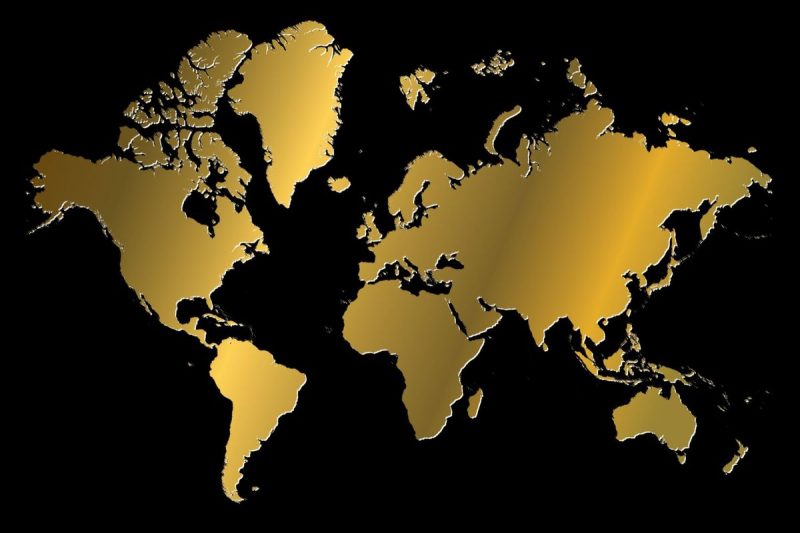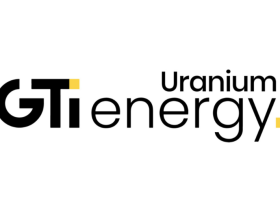The gold price has tracked higher in the past few years, sparking interest in the biggest producers.
The precious metal’s price gains have come on the back of the uncertainty caused by the global economic impact of the COVID-19 pandemic, as well as increasing geopolitical turmoil surrounding Russia’s war in Ukraine.
These circumstances have left investors seeking safe-haven assets like gold, but output remains relatively flat — according to the US Geological Survey, global gold mine production was relatively on par with the previous year in 2022.
1. China
Mine production: 330 metric tons (MT)
Once again, China was the largest producer of gold in the world, mining 330 MT in 2022, nearly on par with 2021’s 329 MT. The country has held its top position for more than a decade.
According to the World Gold Council, China is the world’s leading consumer of gold jewelry.
2. Australia and Russia
Mine production: 320 MT
Australia and Russia tied for the title of second largest gold-producing country in 2022.
Gold production in Australia had another high-performing year, reaching 320 MT, up marginally by 5 MT from the previous year. Gold is mined at major operations throughout the country, with the top five gold-producing mines being located in five different states. The top-producing mine is Newcrest Mining’s (ASX:NCM,TSX:NCM) Cadia mine in New South Wales.
Exploration activity in the Pilbara region of Western Australia has renewed interest and helped increase the country’s consistent gold output. While the Pilbara area is best known as one of the world’s largest producers of iron ore, it is currently in the midst of increased gold exploration and production thanks to a major discovery in 2017 by Novo Resources (TSXV:NVO,OTCQX:NSRPF) and Artemis Resources (ASX:ARV,OTCQB:ARTTF).
Russia’s gold output has been rising over the past few years, increasing from 255 MT in 2017 to 320 MT in 2022. According to Statista, the country’s output is projected to reach nearly 400 MT by 2030.
The US Geological Survey states that Russia’s gold reserves stand at 6,800 MT, giving it the second largest gold reserves after Australia.
4. Canada
Mine production: 220 MT
For 2022, gold production in Canada was down a marginal 3 MT from 2021, but the nation still managed to increase its status, moving up from its previous spot as the fifth largest producer of the yellow metal. Canada’s gold output has been on the rise in recent years, up from 175 MT in 2019.
Ontario and Quebec are the largest gold-producing provinces in the country; together, they represent more than 70 percent of Canada’s gold output. The Canadian government states that gold is the nation’s most valuable mined commodity, with C$13.7 billion worth of the precious metal produced in 2021.
5. United States
Mine production: 170 MT
In 2022, the US produced 170 MT of gold, down by 17 MT from the previous year. The nation’s output has been dropping over the past five years and has fallen from 2017’s total of 237 MT.
Last year, most US gold production came from more than 40 lode mines, several large placer mines in Alaska and a number of smaller placer mines in the Western US. The top 28 operations in the country were responsible for 98 percent of American gold output.
An assessment of US gold resources shows that the country has approximately 33,000 MT of gold in identified and undiscovered resources. According to the US Geological Survey, close to a quarter of the gold in undiscovered resources can be found in porphyry copper deposits. Gold reserves in the US are estimated at 3,000 MT.
6. Mexico and Kazakhstan
Mine production: 120 MT
Mexico is a notable gold producer, tying with Kazakhstan for the sixth spot. In 2022, Mexico’s gold output was on par with the previous year. Gold and silver account for over 50 percent of the country’s total metals output.
Kazakhstan’s 2022 gold output of 120 MT represents a recent peak in the country’s production of the yellow metal, up from just 69 MT produced in 2016. Kazakhstan’s largest gold-mining operation is the Altyntau Kokshetau mine, owned by mining giant Glencore (LSE:GLEN,OTC Pink:GLCNF).
8. South Africa
Mine production: 110 MT
In 2022, South Africa produced 110 MT of gold, up slightly by 3 MT from the previous year. About one-tenth of global gold reserves are located in the country, with the Witwatersrand Basin considered one of the largest gold resources in the world.
South Africa has been one of the world’s top gold producers for decades, but between 1980 and 2018 the nation’s gold output fell by 85 percent. In recent years, South Africa has been the site of conflicts between the Association of Mineworkers and Construction Union (AMCU) and gold producers in the area. The AMCU has held many protests and strikes at several gold and platinum mines within the last few years in the hopes of garnering more wages and stopping any mergers that could cause job losses.
9. Peru and Uzbekistan
Mine production: 100 MT
Peru and Uzbekistan are tied for ninth place on this list of the largest producers of gold.
Uzbekistan’s Muruntau gold mine is one of the largest open-pit mines in the world. Uzbekistan has been producing from old mines for quite some time, and has not seen much exploration investment. In 2022, the country produced 100 MT of the precious metal, on par with the previous year.
Peru saw a slight uptick in gold production from last year, with output nudging up 3 MT from the previous year to hit 100 MT in 2022. Illegal gold mining continues to be a struggle for the country, and has been responsible for the devastation of land, including patches of the precious Amazon forest.
FAQs for gold investing
Which country has the most gold?
Australia holds the world’s largest gold reserves at 8,400 MT, followed by Russia at 6,800 MT.
Which nation is the largest owner of gold?
The country with the largest central bank gold reserves is the US, which had 8,133.5 MT as of September 2022. Most US central bank gold is held in deep storage in Denver, Fort Knox and West Point.
How much gold is mined each year?
Gold production is fairly consistent. In 2022, gold mine production worldwide came in at approximately 3,100 MT, which is nearly on par with the gold mined each year since 2016.
How is gold mined?
Gold is mined by several different methods, including: placer mining, hard-rock mining, by-product mining and by processing gold ore. The method a gold-mining company chooses depends upon the size, location, geological model and metallurgy of the deposit in question.
What is the production cost of gold?
The cost of producing gold varies from one miner to the next, and is reported as the all-in sustaining cost (AISC). AISC was first introduced in 2013 by the World Gold Council. Deposit type, energy costs and inflation are the factors that have the largest impact on AISC. The average AISC for the entire gold industry is calculated by averaging the production costs of the largest gold producers. The average AISC fluctuates with changes in energy costs and inflation.
Securities Disclosure: I, Melissa Pistilli, currently hold no direct investment interest in any company mentioned in this article.





